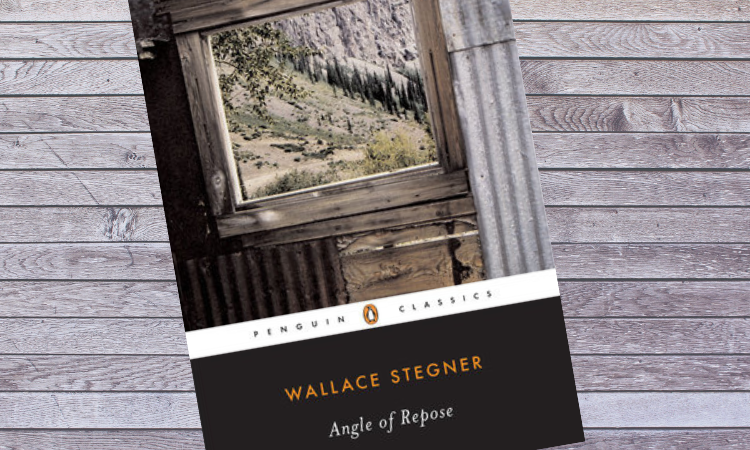The trouble with living sacrifices
I’ve been a member of The Bookies book club now for going on two years. We’re four guys, all current or past members of the same church.
Some of the books we’ve read left me hungry for more. Hanna Coulter, by Wendell Berry, for example. Others, like Helen MacDonald’s, H is for Hawk, kept me doing the math on how many pages I had to wade through before the end hove into view.
We just finished Angle of Repose, by Wallace Stegner. It won the Pulitzer Prize for Fiction in 1972. Ostensibly, it’s the story of the hard luck lives of an engineer and his wife as they wonder between mining camps and ne’er do well irrigation schemes in the American west in the 1870’s and ’80’s. Dank, dark tunnels and dry irrigation canals torment Oliver Ward and his wife, Susan, with the allure of riches that remain forever just beyond their grasp.
Angle is the sort of book that left me hungry for more.
The crucible
The book really isn’t about the brutally tough existence of miners in hard scrabble towns like Leadville. (Although, as a Colorado native, it was a nice bonus to read a story celebrating places that I’ve driven through and been familiar with ever since I was a kid.)
The novel is actually about a highly improbable marriage. The union of two people who could scarcely be more different. But having made a quality, although probably ill-advised decision to marry, Oliver and Susan Ward personify the notion of “not sweating the small stuff. And it’s all small stuff.”
The Wards are the kind of people the Psalmist probably had in mind when he wrote,
“Who may live on your holy mountain?
. . . the one who keeps an oath even when it hurts,
and does not change their mind.”
Time and again, politicians, speculators and less honorable men cheat “Grandfather;” the story’s narrator is Oliver’s grandson, Lyman Ward. Who, in turn, is a Berkeley university history professor trapped in a broken body-and time. Stegner’s depiction of the “liberated,” braless hippies that swarm like so many intellectual gnats around Lyman’s typewriter provides what little comic relief the novel affords.
The story ricochets back and forth between people, place and time. Sometimes it follows Oliver to his preferred environment, the rough-as-a-cob West, where civilization scarcely rises to the level of a veneer. Sometimes it follows Susan to her preferred environment in the East, where where she occasionally escapes from the miseries of the frontier to revel in a civilization thickly encrusted with fine art, elite schools for her children, and literary salons. Lyman, looking back from the tumultuous 1960’s and the ruins of his own marriage, tries to make sense of all he surveys from the wheel chair planted in front of his typewriter.
The two shall become one
Oliver and Susan Ward’s marriage is littered with disappointments, tragedy and betrayal. By the end of Angle of Repose, their union is little more than a dry husk. But a union it stubbornly remains. Held together, probably as much as anything, by the conventions of society. And the couple’s recognition that their’s is the hand to mouth existence described in Ecclesiastes:
‘Two are better than one,
because they have a good return for their labor:
If either of them falls down,
one can help the other up.
But pity anyone who falls
and has no one to help them up.”
Those who do not learn from history . . .
Lyman Ward is depicted as a meticulous historian in Angle. He sympathetically reconstructs the lives of both of his grandparents from from the voluminous letters that flow between Susan and her well-to-do Eastern confidant. In so doing, Lyman, by the end of the novel, changes from a dispassionate chronicler of his grandparents’ lives. To a student of their lives.
Lyman sees the parallels in their familial stories. How Oliver, a virtual emotional cripple, had helped drive Susan to a desperate act of unfaithfulness. And yet how, through it all, the two remained faithful to the quality decision they had made so many years before.
And now, how Lyman’s own wheel chair bound existence had contributed to his wife’s similar fate when she took up with the surgeon who amputated Lyman’s leg.
But there, the stories diverge. On the one hand, it’s “until death do us part.” On the other, it’s a bitter, never to be forgiven divorce.
. . . are doomed to repeat it?
But unexpectedly, almost as if by dues ex machina, Lyman’s ex-wife, Ellen, shows up in the novel’s final pages. No longer married to the sawbones who’d cut Lyman’s leg down to size, Ellen’s reappearance as someone willing to help care for her ex-husband is a puzzle. After all, by the 1960’s, the societal conventions that had held marriages together in Oliver and Susan’s days were long gone-if, indeed, marriage itself was still was still held to be conventional. And financial necessity in marriage? Gone the way of the not-so-great Great Society.
So, what’s up with this last twist in the plot?
Although nowhere explicitly stated (like the rest of this elegantly understated novel), it’s probably about forgiveness. About how Lyman learns that Oliver’s failure to forgive Susan didn’t maim just her life. But, even more, his.
And that, as the historian of the family, Lyman, of all people, was not doomed to repeat his grandfather’s error.





Spencer
Well done! Looking forward to seeing you Saturday. Enjoy the snow and stay safe. A good day to blog, or do taxes.
Ken
________________________________